Best Laravel Image Deletion Tools to Buy in December 2025
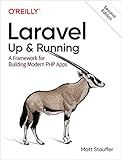
Laravel: Up & Running: A Framework for Building Modern PHP Apps



Laravel 12 for Beginners & Beyond: A Complete Guide to Building Modern PHP Web Applications with Clean Architecture, Hands-On Projects, and Best Practices


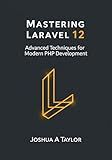
Mastering Laravel 12 : Advanced Techniques for Modern PHP Development


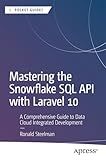
Mastering the Snowflake SQL API with Laravel 10: A Comprehensive Guide to Data Cloud Integrated Development (Apress Pocket Guides)


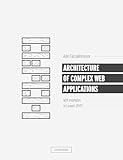
Architecture of complex web applications. Second Edition.: With examples in Laravel(PHP)



Laravel 7.X : LEARN BASIC LESSONS & BUILD A CRUD APP (PHP Framework)



The Laravel Survival Guide: Written & Updated for Laravel 5.3



Laravel Essentials: Tips & Tricks for Developers: Master Laravel with Practical Tips for Every Developer


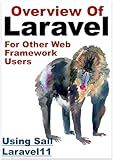
Overview Of Laravel PHP Framework: For Other Web Framework Users


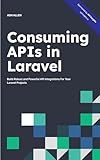
Consuming APIs in Laravel: Build Robust and Powerful API Integrations For Your Laravel Projects With Ease


To delete an image from the storage in Laravel, you need to use the Storage facade provided by Laravel. First, you need to specify the path of the image you want to delete. Then, you can use the Storage::delete() method passing in the path of the image as an argument. This will delete the image from the storage. Remember to properly handle errors and permissions when deleting images from storage.
How to implement a soft delete mechanism for images in the storage in Laravel?
To implement a soft delete mechanism for images in storage in Laravel, you can follow these steps:
- Add a "deleted_at" column to the table that tracks the images, typically the images table in the database. This column will be used to mark images as "deleted" without actually removing them from the storage.
- Create a migration to add the "deleted_at" column to the images table by running the following command: php artisan make:migration add_deleted_at_to_images_table --table=images
- In the generated migration file, add the following code to add the "deleted_at" column:
public function up() { Schema::table('images', function (Blueprint $table) { $table->softDeletes(); }); }
public function down() { Schema::table('images', function (Blueprint $table) { $table->dropSoftDeletes(); }); }
- Run the migration to update the database schema with the new "deleted_at" column by running the following command: php artisan migrate
- Update the Image model in your Laravel application to use the SoftDeletes trait. Add the following line at the top of your Image model:
use Illuminate\Database\Eloquent\SoftDeletes;
and then add the SoftDeletes trait within the class definition:
class Image extends Model { use SoftDeletes; }
- Now when you want to "soft delete" an image, you can use the delete() method on the Image model. This will set the "deleted_at" column for the image to the current timestamp:
$image = Image::find($id); $image->delete();
- To retrieve only images that have not been soft deleted, you can use the withTrashed() method on the Image model:
$images = Image::withTrashed()->get();
- To restore a soft deleted image, you can use the restore() method on the Image model:
$image = Image::withTrashed()->find($id); $image->restore();
By following these steps, you can implement a soft delete mechanism for images in the storage in Laravel.
How to handle deletion of images in a multi-tenant environment in Laravel?
In a multi-tenant environment in Laravel, handling the deletion of images involves additional considerations to ensure that images are deleted only for the specific tenant who uploaded them. Here are steps to handle deletion of images in a multi-tenant environment in Laravel:
- Associate images with tenants: When an image is uploaded by a tenant, make sure to associate that image with the respective tenant. This can be done by storing the tenant's ID along with the image details in the database.
- Implement authorization checks: Before deleting an image, ensure that the authenticated user has the permission to delete that specific image. You can check if the authenticated user is the owner of the image or has the necessary roles/permissions to delete it.
- Use middleware for authorization: Implement middleware that checks the ownership or permission to delete images. This middleware should be applied to routes or controllers handling the deletion of images.
- Delete images using the tenant context: When deleting images, make sure to include the tenant's ID in the deletion query to ensure that only images belonging to that tenant are deleted. This can be done by adding a where clause to the delete query based on the tenant's ID.
- Perform cascading deletes: If there are relationships between images and other entities (e.g., posts, users), consider implementing cascading deletes to ensure that related images are also deleted when associated entities are deleted.
- Handle orphaned images: In case a tenant is deleted or somehow loses access to their images, implement a mechanism to handle orphaned images. You can periodically clean up orphaned images or provide an option for tenants to transfer ownership of their images.
By following these steps, you can ensure that the deletion of images in a multi-tenant environment in Laravel is handled securely and efficiently while maintaining the data integrity and privacy of each tenant.
What is the role of database cleanup when deleting images from the storage in Laravel?
When deleting images from the storage in Laravel, it is important to perform database cleanup in order to keep the database consistent with the files stored in the storage. The role of database cleanup in this scenario includes the following tasks:
- Removing any references to the deleted images in the database: If the images are stored in the database and associated with certain records, it is important to delete those references when deleting the images. This ensures that the database remains consistent and does not contain references to non-existent files.
- Updating any relationships or foreign keys: If the images are linked to other entities in the database through relationships or foreign keys, it is important to update these relationships when deleting the images. This ensures that the database remains consistent and does not contain broken relationships.
- Freeing up storage space: When deleting images from the storage, it is important to update the database to reflect the freed-up storage space. This helps to optimize the use of storage resources and prevents unnecessary clutter in the database.
Overall, database cleanup is essential when deleting images from the storage in Laravel to maintain data integrity and optimize storage usage.
